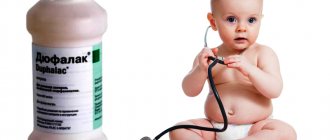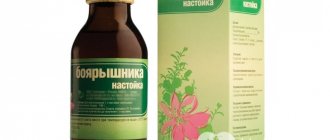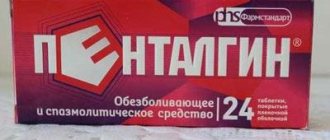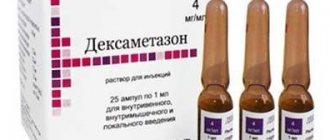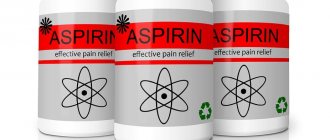Heroin is an opiate drug. Its second name is diacetylmorphine. There are a lot of people who use this semi-synthetic drug. At the same time, a heroin overdose is a condition requiring emergency measures.
Helping one's neighbor is everyone's duty. When seeing a dying person, you need to be able to recognize heroin poisoning in time in order to take the necessary measures to save someone else’s life. If this is not done, the likelihood of death increases several times. Therefore, let's find out how to recognize the symptoms of a heroin overdose, what to do to provide first aid, and what the consequences of such poisoning will be.
General information
Heroin is an extremely powerful semi-synthetic drug with a high potential for addiction. Produced by processing pure morphine or opium (poppy). Included in List I of prohibited substances of the Russian Federation, as one of the most dangerous.
According to the UN Report 2020, 17 million people worldwide used opiates in 2020. Among them, the most common was heroin. It was also the most common cause of fatal overdose.
The average age of onset of abuse in the EU is 23 years.
Medical treatment
The ambulance team that arrives on call will assess the person’s condition and check his vital signs (blood pressure level, breathing and pulse rate, oxygen concentration in the blood). Describe to them the first symptoms that arose in the patient, name the time of their development, list the amount of first aid you provided.
Doctors will give the person the heroin antidote, naloxone, and take him to the nearest poison control center or intensive care unit. The length of stay in a hospital will depend on the patient’s condition and his body’s reaction to the treatment. At the hospital he will be offered treatment for heroin addiction.
History of creation
Heroin was first produced during experiments by Alder Wright back in 1874. The substance entered the pharmaceutical market after 1898 in the form of a medicine for the treatment of colds (Bayer AG). In Germany it was sold by prescription in pharmacies until 1971.
The first reports on the unsafety of uncontrolled use of opiates came from the United States. American doctors noted many side effects, most alarming was the rapid development of addiction. The wave of deaths led to a complete ban on heroin in the United States in 1924.
Now the pharmaceutical circulation of opiates is under strict control. At the same time, the scale of illegal drug production remains high.
During the reporting period 2015-2016, law enforcement officers seized a record amount of heroin in the world - more than 91 tons.
Effect on the body
After consumption, heroin binds to opioid receptors, which are located primarily in the brain (brain, spinal column) and intestines. In the body, the main part of the dose taken is converted into morphine. In addition to the direct toxic effect, the substance disrupts the excitability of neurons due to the increased release of gamma-aminobutyric acid (GABA) and endorphins.
Physical symptoms
Somatic manifestations of intoxication are caused by the influence mainly on mu-opioid receptors. Heroin intoxication can be identified by the following symptoms:
- miosis - sharply constricted pupils;
- “glassy” look;
- confused speech;
- impaired mobility of limbs;
- tendency to fall;
- rare, weak breathing;
- stomach ache;
- nausea, vomiting;
- decreased urination;
- dizziness;
- slowdown of the cardiovascular system - bradycardia;
- constipation due to disruption of intestinal peristaltic waves;
- inactivity;
- dry mouth;
- lethargy of all skeletal muscle groups;
- visual impairment;
- pallor of the skin, mucous membranes;
- there may be a decrease in body temperature;
- slowing metabolism (metabolism).
Chronic opiate users develop a jaundiced skin tone due to their negative effects on liver function. Scars, age spots, and wounds after frequent injections are noticeable on the elbows and hips.
A slight excess of the average tolerated dose leads to loss of consciousness.
Cognitive changes
Drug administration quickly leads to disruption of the central nervous system (CNS). The following mental changes occur:
- sharp depression of all cognitive processes;
- apathy;
- drowsiness;
- reduction of all types of sensitivity;
- impaired perception of time and space;
- foggy thinking;
- decreased intellectual abilities;
- hallucinations;
- crazy ideas.
An indifferent, apathetic state can quickly turn into an aggressive neurosis. During intoxication, patients refuse food, ignore the sense of self-preservation, and events occurring around them (including dangerous ones).
Cognitive changes largely depend on the individual mental profile.
Signs of overdose
What symptoms are typical for heroin intoxication in adults?
An overdose is noticeable a short time after the drug is injected into a vein. Symptoms:
- The pupils narrow greatly, in rare cases they are practically invisible,
- Impaired speech functions, the drug addict pronounces words indistinctly, at a slow pace,
- Apathy, strong desire to sleep,
- The absence of any emotions or, conversely, a clear manifestation of aggression,
- Confused consciousness, lack of orientation in space,
- Reduced blood pressure,
- Heavy sweating
- Heartbeat slows down
- The skin becomes pale, in some cases there is a bluish discoloration of the nasolabial triangle, ears,
- There are problems with defecation and urination - the process is often spontaneous,
- The respiratory process is disrupted
- Possible presence of convulsive syndrome, lack of consciousness,
- Development of a coma.
In the absence of help, death from an overdose occurs quite quickly. The cause is cardiac arrest or pulmonary edema.
Effects of heroin
The symptoms observed with recreational opioid use are due to disruption of the brain and peripheral nerves. Psychophysical effects can be divided into the following groups:
- Central. Clinic of acute depression of the central nervous system. All phenomena of cognitive impairment, as well as inhibition of the brain structures responsible for breathing, gag reflex, perception, metabolism, pain sensitivity.
- Peripheral. Symptoms of gastrointestinal disorders due to slower peristalsis, spasm of the bronchi and ureters, impaired thermoregulation, decreased secretion of glands.
Opioid receptor density varies from person to person. The effect of the drug depends on age, genetic characteristics, health and mental health.
The side effects of heroin are aggravated when combined with alcohol, anesthetics, sleeping pills, sedatives, and other psychotropic substances that depress the central nervous system.
First aid for intoxication
If signs of overdose appear, first aid must be provided to the victim as quickly as possible.
What to do:
- If the victim of heroin is conscious, then it is recommended to constantly communicate with him, shake him up, not let him lose consciousness or fall asleep,
- The person is laid on a flat surface,
- Clean the mouth cavity from vomit and saliva, pull out the tongue so as not to choke,
- In case of an overdose, the patient must remove all tight clothing, provide him with a flow of fresh air,
- In the absence of consciousness, the use of ammonia is allowed,
- If during an overdose there is a violation of the respiratory process, there is no heartbeat, then resuscitation measures must be taken.
A team of doctors is required to be called and after first aid is provided, the heroin victim is sent to a medical facility. There are a number of actions that cannot be performed in case of an overdose.
Actions:
- Leaving a person alone
- Try to bring him back to consciousness with a cold bath. Only a shower is allowed in case of mild poisoning,
- Use other psychotropic substances to neutralize the effects of heroin.
Composition of the drug
Illegal laboratories use cheap raw materials and toxic reagents to synthesize the drug. The result is a poorly purified product, characterized by an unpleasant odor and bitter taste. The composition may contain the following substances:
- extracts of opium, poppy straw;
- low purity morphine;
- alkaloids (plant poisons), among which the most dangerous are acetylcodeine, meconine;
- under poor transportation/storage conditions, the powder hydrolyzes to form 6-monoacetylmorphine;
- psychotropic additives that enhance the narcotic effect - ephedrine, amphetamine, methadone, diphenhydramine;
- ballast impurities to add weight - sugar, starch;
- The most dangerous combination with cocaine is speedball.
The purity of the product reaching the underground markets is 40-60%. The physicochemical properties of the finished product are influenced by the region of origin of the opium poppy.
The final composition of heroin can include more than 40 components, which also have side effects.
How to ease withdrawal symptoms
You should not fight withdrawal symptoms on your own. This is a very painful condition that not everyone can survive without outside help - the vast majority of drug addicts “break down” in the first two days of abstinence. Some people manage to ease withdrawal symptoms by detoxifying at home - this is an increased drinking regimen in combination with taking diuretics. However, this often works only in the early stages of addiction, when the addict is not yet forced to inject 10-20 ml several times a day.
The most effective relief from heroin withdrawal syndrome is provided by rehabilitation centers, which provide effective detoxification (not only drip administration of saline, but also hardware methods of blood purification), and also prescribe symptomatic treatment - non-narcotic analgesics, antidepressants, antipsychotics and hepatoprotectors. In addition, a psychotherapist always works with the patient, who develops in his ward the necessary level of motivation and self-confidence.
Bibliography:
- Wikipedia. Heroin.
- What are the immediate (short-term) effects of heroin use?
- Author Artyom Emelyanenko
Editor Artyom Emelyanenko
The harm of heroin
In terms of narcotic properties, heroin is many times stronger (more dangerous) than morphine. The harm of the drug is due to the following features:
- physical addiction occurs after 3-4 intravenous injections;
- 1-1.5 months is enough to reach the second stage of addiction, when it is no longer possible to stop using on your own;
- rapid development of tolerance – increased resistance to the action of the drug;
- a large number of side effects;
- high risk of fatal overdose;
- 5-12 hours after administration, the first signs of “withdrawal” syndrome—withdrawal—are noticeable;
- intoxication leads to dysfunction of internal organs, the most vulnerable are the liver (toxic hepatitis), the genitourinary system (acute kidney damage), the gastrointestinal tract, and blood vessels;
- exhaustion;
- damage to central nervous system structures;
- high injury rate;
- In order to obtain drugs, addicts are ready to commit crimes, including murder;
- loss of job, family;
- social inability.
Given the dubious quality of the drug, more than half of people addicted to opiates have suffered an overdose at least once. Toxic impurities affect small vessels and nervous tissue.
An allergic reaction to heroin in the form of anaphylactic shock or Quincke's edema is not uncommon.
Development of heroin addiction
Heroin usually enters the body through intravenous injection, less often as part of smoking mixtures. To feel the effects of this drug, 1 mg is enough for an average-sized adult, but for an injection, at least 10 mg of heroin is usually dissolved in water. The problem is that the body quickly gets used to the drug, and a person cannot achieve the desired state without increasing the dose. At this rate, the daily “norm” of a drug addict reaches 2 g, which, of course, causes severe poisoning of the body. This number means several doses of the drug per day, since the lethal dose, for different people, ranges from 60-80 to several hundred mg.
Call us right now: +7 (812) 454-00-50
or make an appointment online
By clicking on the button, you accept the terms of the company's privacy policy and give permission to process your personal data.
Prices for Ultramed clinic services
Unfortunately, in pursuit of a feeling of euphoria and drug-induced sleep, the addict loses control of himself and often injects himself with a lethal dose. If there is no person nearby who could help him (and usually he is surrounded by the same drug addicts), this dose becomes the last in his life.
Prerequisites for heroin overdose:
- Increasing the body's sensitivity to heroin. It would seem that a person gets used to the drug,
however, due to a long break in use, the body “forgets” unpleasant moments. This can happen, for example, after treatment or long-term abstinence from heroin. If a person “breaks down” and injects himself with the same dose, the body’s reaction will be more severe. - Excessive use of heroin. Using a drug in itself is already bad, but taking one dose after another can seriously undermine the body. He simply will not have time to cope with the huge flow of toxins.
- Use of low-quality or, conversely, very pure heroin. If a drug addict finds doses in different places, he can easily make a mistake in the amount of powder for dilution.
- The presence of diseases of internal organs. Heroin is a poison that reduces the body’s defenses and provokes the development of many diseases. It is especially dangerous to use it for diseases of the liver, heart and respiratory system. If previously the body could cope with diseases at the very least, if heroin enters the bloodstream, it will not be able to fight them.
- Mixing drugs of different origins, for example, herbal, synthetic and semi-synthetic (which includes heroin). Heroin is also incompatible with alcohol: these substances only enhance each other’s effects.
- Presence of mental disorders.
- Belonging to vulnerable segments of the population, having life problems, low wages, poor environment, etc.
Consequences of long-term use
Repeated administration of opiates alters the physiology of the brain and spinal cord. The following long-term complications are possible:
- the formation of a dependence syndrome that is difficult to treat;
- withdrawal syndrome – “heroin withdrawal”;
- neurohumoral imbalance;
- tendency to more severe secondary infections;
- infection with HIV, viral hepatitis;
- exacerbation of existing diseases;
- nephropathy up to chronic renal failure;
- decreased immune defense of the body;
- mental disorders are formed;
- destruction of personality;
- cardiac complications;
- decreased intelligence;
- loss of work skills;
- disability;
- multiple organ failure;
- loss of interest in life.
Chronic poisoning is explained by the aggressive properties of impurities, pollutants, and toxic metabolites. Heroin itself disrupts the functioning of the nervous system to a greater extent.
The most dangerous onset of abuse is during adolescence.
Withdrawal
Withdrawal syndrome occurs when physical cravings are persistently formed. The condition is considered extremely serious, and collapse is possible.
Abstinence stages:
- Occurs a few hours after withdrawal - copious salivation, lacrimation and uncontrolled sneezing. The person experiences strong emotional stress.
- It occurs after a day or more - the addict feels a fever, which is replaced by chills. The muscles are in hypertonicity.
- It occurs after 2 days – severe muscle pain (twisting) appears. The person begins to “throw around” to find a comfortable body position. Aggression is growing.
- It occurs after 3 days - retroperitoneal pain and diarrhea appear. Uncontrollable vomiting follows.
The duration of withdrawal and the severity of symptoms depend on the stage of drug addiction. After the “withdrawal” experience, psychological cravings persist.



